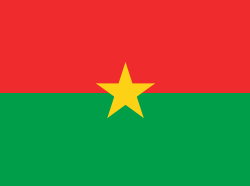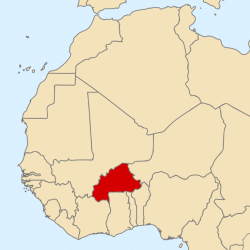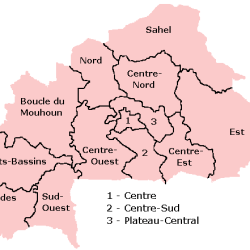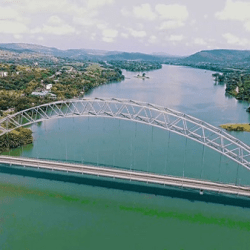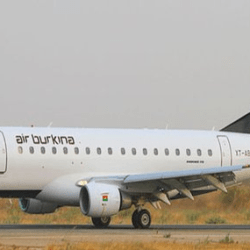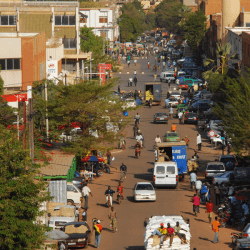There are 13 regions (states) in Burkina Faso namely:
- Boucle du Mouhoun
- Cascades
- Centre
- Centre-Est
- Centre-Nord
- Centre-Ouest
- Centre-Sud
- Est
- Hauts-Bassins
- Nord
- Plateau-Central
- Sahel
- Sud-Ouest
Region and capital
| Region | Capital |
| Boucle du Mouhoun | Dédougou |
| Cascades | Banfora |
| Centre | Ouagadougou |
| Centre-Est | Tenkodogo |
| Centre-Nord | Kaya |
| Centre-Ouest | Koudougou |
| Centre-Sud | Manga |
| Est | Fada N’gourma |
| Hauts-Bassins | Bobo Dioulasso |
| Nord | Ouahigouya |
| Plateau-Central | Ziniaré |
| Sahel | Dori |
| Sud-Ouest | Gaoua |



The regions are divided into 45 provinces and subdivided into 351 communes.
Burkina Faso is governed as a semi-presidential republic with executive, legislative and judicial powers.
Since independence, the country has gone though instability, droughts, famines and corruption.
Various coups have also taken place in the country, in 1966, 1980, 1982, 1983, 1987, and twice in 2022, in January and September, as well as an attempt in 1989 and another in 2015.
Thomas Sankara came to power following a successful coup in 1982. As president, Sankara embarked on a series of ambitious socioeconomic reforms which included a nationwide literacy campaign, land redistribution to peasants, providing vaccinations to over 2 million children, railway and road construction, equalized access to education, and the outlawing of female genital mutilation, forced marriages, and polygamy. He served as the country’s president until 1987 when he was deposed and assassinated in a coup led by Blaise Compaoré, who became president and ruled the country until his removal on 31 October 2014.
Burkina Faso has been affected by the rise of Islamist terrorism in the Sahel since the mid-2010s. Several militias, partly allied with the Islamic State (IS) or al-Qaeda, operate in Burkina Faso and across the border in Mali and Niger. More than one million of the country’s 21 million inhabitants are internally displaced persons.
Burkina Faso’s military seized power in a coup d’état on 23–24 January 2022, overthrowing President Roch Marc Kaboré. On 31 January, the military junta restored the constitution and appointed Paul-Henri Sandaogo Damiba as interim president, who was himself overthrown in a second coup on 30 September and replaced by military captain Ibrahim Traoré.
Burkina Faso is one of the least developed countries in the world, with a GDP of $16.226 billion.
Burkina Faso
Burkina Faso is a country in West Africa.
It is bordered by Mali to the northwest, Niger to the northeast, Benin to the southeast, Togo and Ghana to the south, and Ivory Coast to the southwest.


| Capital | Ouagadougou |
| Area | 274,000 sq km |
| Population (2017) | 19.2 Million |
It has a land area of 274,223 km2 (105,878 sq mi).
As of 2021, the country had an estimated population of 20,321,378.

















Its citizens are known as Burkinabè and its capital and largest city is Ouagadougou.
Previously called Republic of Upper Volta (1958–1984), it was renamed Burkina Faso by President Thomas Sankara.
In 1896, it was colonized by the French as part of French West Africa; in 1958, Upper Volta became a self-governing colony within the French Community. In 1960, it gained full independence with Maurice Yaméogo as president.







The largest ethnic group in Burkina Faso is the Mossi people. They established powerful kingdoms such as the Ouagadougou, Tenkodogo, and Yatenga.
There are 60 indigenous languages officially recognized by the Burkinabè government, with the most common language, Mooré, spoken by over half the population.
The country has reserves of gold, manganese, copper and limestone.
Ethnic groups
Burkina Faso’s people belong to two major West African ethnic groups: the Voltaic and the Mandé (whose common language is Dioula).
The Voltaic Mossi make up about one-half of the population.
The Mossi claim descent from warriors who migrated from northern Ghana around 1100 AD.
They established an empire that lasted many years. Predominantly farmers, the Mossi kingdom is led by the Mogho Naba, whose court is in Ouagadougou.
List of Ethnic groups and their sizes in percentages
| Ethnic group | Percent | ||
| Mossi | 40.50% | ||
| Fula | 9.30% | ||
| Gourmanche | 6.10% | ||
| Bambara | 4.90% | ||
| Bissa | 3.20% | ||
| Bwamu | 2.10% | ||
| Dagara | 2% | ||
| San | 1.90% | ||
| Lobiri | 1.80% | ||
| Lyele | 1.70% | ||
| Bobo | 1.40% | ||
| Senoufo | 1.40% | ||
| Nuni | 1.20% | ||
| Dafing | 1.10% | ||
| Tamasheq | 1% | ||
| Kassem | 0.70% | ||
| Gouin | 0.40% | ||
| Dogon | 0.30% | ||
| Songhai | 0.30% | ||
| Gourounsi | 0.30% | ||
| Ko | 0.10% | ||
| Koussasse | 0.10% | ||
| Sembla | 0.10% | ||
| Siamou | 0.10% | ||
| Other nationals | 5% | ||
| Other Africans | 0.20% | ||
| French | 1.30% | ||
| Other non-indigenous | 0.10% |
Languages
The Mooré language is the most spoken language in Burkina Faso, spoken by about half the population, mainly in the central region around the capital, Ouagadougou.
Over 68 languages are spoken in the country of which about 60 languages are indigenous.
Although Burkina Faso is a multilingual country, the official language is French. it is the principal language for administrative, political and judicial institutions as well as public services, and the press.
Gold mining
Mining of gold in Burkina Faso grew fast with more than 15 discoveries made since 2006.
In 2017 mining company Nexus Gold began district-scale exploration of the Niangouela and Bouboulou gold concessions.
Gold is a major export commodity.
In 2011 gold earned Burkina Faso 127 billion CFA (US$247 million).
Between 2007 and 2011, it brought in 440 billion CFA, accounting for 64.7 percent of all exports and 8 percent of GDP.
Production rose from 23 tonnes in 2010 to 32 tonnes in 2011.
Gold mines are spread across the country’s northern, western, southwestern and central regions.
